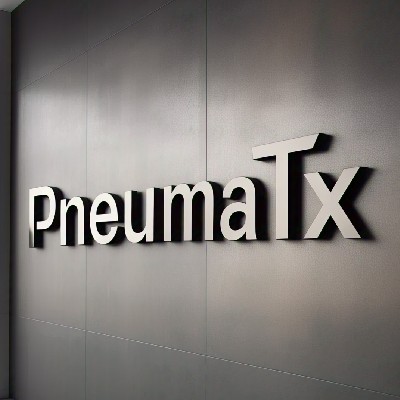BNBからJPYへの交換
現在のBNB価格(JPY)
BNBの価格は今日上がると思いますか、下がると思いますか?
BNBの市場情報
BNB (BNB)について
Binance Coinとは?
Binance Coin(BNB)は、世界最大の暗号資産取引所Binanceが2017年に導入したデジタル通貨です。Binance CoinはもともとERC-20トークンで、Ethereumベースのトークンの中で一般的な規格でした。しかし、2019年には独自のブロックチェーン「BNBチェーン」に移行しました。このチェーンは、BinanceチェーンとBinanceスマートチェーンの2つのブロックチェーンを統合したものです。この独立したチェーンにより、BNBはEthereumのインフラストラクチャーの外側で存在することができ、Binanceはそのパフォーマンスを微調整し、改善することができます。
BNBは、ユーザーに多様なサービスを提供するユーティリティ・トークンです。Binanceプラットフォームでの取引手数料を割引価格で支払ったり、Binanceローンチパッドでのトークンセールに参加したり、店舗での支払いや旅行の宿泊予約にも利用したりすることができます。
関連資料
公式サイト: https://www.bina nce.com/en/bnb
Binance Coinの仕組み
Binanceは、中央集権型取引所(CEX)、分散型取引所(DEX)、ブロックチェーン・ネットワーク、様々な暗号資産を包含するデジタル資産の包括的なエコシステムとして運営されています。その中核となるのが、主要なブロックチェーン・ネットワークであるBNBチェーンです。取引の検証とネットワークの安全性を確保するために、プルーフ・オブ・ステーク(PoS)とプルーフ・オブ・オーソリティー(PoA)のコンセンサス・メカニズムに依存しています。
このネットワークは2つの異なるサブチェーンに分かれています。以前はBinanceチェーンとして知られていたBNB Beaconチェーンは、ネットワーク内のガバナンス決定を担当します。対照的に、BNBチェーン(以前はBinance・スマートチェーンと呼ばれていた)はイーサリアム仮想マシン (EVM)(EVM)と互換性があり、多種多様な分散型アプリケーション(dApps)をサポートすることができます。ほとんどのオンチェーン取引はBNBチェーン上で行われ、Binanceのエコシステム内で不可欠な役割を担っていることを示しています。
BinanceエコシステムにおけるBinance Coinの役割
Binance Coin(BNB)は、Binanceのエコシステムのネイティブ暗号資産であり、Binance取引所における取引手数料の割引をはるかに超える複数の役割を果たしています。BNBは当初、取引にインセンティブを与えるために発行されましたが、幅広い用途を持つ多目的ユーティリティ・トークンに進化しました。異なる暗号資産を変換するためのブリッジ通貨として機能し、ユーザーが新しいブロックチェーンプロジェクトのトークン販売に参加できるBinance Launchpadで極めて重要な役割を果たしています。さらにBNBは、取引やスマートコントラクトの「ガス」として機能するBNBチェーンに不可欠であり、成長する分散型金融(DeFi)セクターにとって不可欠な存在となっています。
BNBの価値と有用性は、さまざまなメカニズムや戦略的イニシアティブによってさらに高められています。Binanceは四半期ごとに「トークン・バーン」を実施し、BNBの供給量を減らし、価格を上昇させる可能性があります。また、Binanceの暗号資産カードにおけるVISAとの提携などのおかげで、この通貨は旅行予約やクレジットカード決済など、現実世界での用途でもますます受け入れられています。Binanceのエコシステムとより広範な暗号ランドスケープにおけるユースケースの拡大と戦略的重要性により、BNBはユーザーにさまざまなメリットと投資機会を提供する多面的な資産としての地位を確立しています。
Binance Coinの価格は何で決まるのか?
Binance Coinの価格に影響を与える要因を理解することは、暗号資産市場の投資家とトレーダーの双方にとって極めて重要です。Binance Coinの価値を決定する主な要因の1つは、Binanceのエコシステム内での有用性です。BNBはBNBチェーンでの取引手数料の支払いに使用され、BNBで手数料を支払うことを選択したユーザーは、しばしば10%から25%の割引を受けることができます。さらに、Binanceは四半期ごとにコインバーンを実施し、取引量に基づいてBNBの供給量を減らし、それによってBinance Coinの時価総額、ひいてはその米ドル価格に影響を及ぼしています。コインの燃焼イベントは、総供給量の50%(1億BNB)が破壊されるまで継続するように設計されており、Binance CoinのROIにデフレの側面を追加しています。
BNBの価格予測に関与するもう一つの要因は、市場全体のセンチメントと取引量であす。Binance Coinの価格履歴を見ると、規制ニュースを含む広範な市場動向に影響を受けやすいことがわかります。例えば、SECの調査やロシアのウクライナ侵攻のような地政学的な出来事は、BNBの対米ドル為替レートに顕著な影響を与えました。さらに、Binance Coinのテクニカル分析にはキャッシュフロー計算が含まれることが多く、これはBinanceの割引ライフサイクルで節約される取引手数料の合計を考慮したものです。このアプローチはBNBコインの価値のかなりの部分を占めており、Bitcoinのような従来の暗号資産と比較してユニークな資産となっています。
Binance Coinの価格分析は、市場での競合やポジショニングにも及んでいます。Binance CoinとBitcoinの価格変動は、投資家の嗜好やリスク選好を洞察することができます。さらに、Binance Coinの価格予測には、ブロックチェーン分野で成長分野となっている分散型金融(DeFi)アプリケーションや非可溶性トークン(NFT)での採用がしばしば組み込まれています。時価総額が最大の暗号資産のひとつとなったBNBの現在の価値は、単に市場の投機を反映しているだけでなく、その本質的な有用性と様々なブロックチェーン・アプリケーションでの採用が拡大していることを反映しています。
まとめ
結論として、Binance Coin(BNB)は広大なBinanceのエコシステムの不可欠な一部です。ERC-20トークンとしてスタートしたトークンは、独自のブロックチェーンを持つ多目的なデジタル資産に成長し、より大きな管理と効率化を可能にしました。Binanceプラットフォームにおける取引手数料の割引やトークンセールへの参加から、BNBチェーンにおける取引やスマートコントラクトの実行のための「ガス」としての役割まで、BNBの幅広いユーティリティは、プラットフォームにおけるその重要な役割を浮き彫りにしています。BNBの価値は、Binanceのエコシステムの枠を超え、数多くのプラットフォームで利用され、統合されています。
Binance Coinの関連記事
BNBのAI分析レポート
BNBの価格履歴(JPY)
 最低価格
最低価格 最高価格
最高価格 
BNBの最高価格はいくらですか?
BNBの最安価格はいくらですか?
BNBの価格予測
BNBの買い時はいつですか? 今は買うべきですか?それとも売るべきですか?
2026年のBNBの価格はどうなる?
+5%の年間成長率に基づくと、BNB(BNB)の価格は2026年には¥147,585.69に達すると予想されます。今年の予想価格に基づくと、BNBを投資して保有した場合の累積投資収益率は、2026年末には+5%に達すると予想されます。詳細については、2025年、2026年、2030〜2050年のBNB価格予測をご覧ください。2030年のBNBの価格はどうなる?
注目のキャンペーン
BNBのグローバル価格
BNB(BNB)の購入方法

無料でBitgetアカウントを作成します

アカウントを認証する

BNBをJPYに交換
よくあるご質問
BNBは他の仮想通貨とどう違うのですか?
BinanceトークンのバーンはBNBの価値にどのような影響を与えますか?
BNBは良い投資ですか?
BNBの最大供給量はいくらですか?それは価格にどのような影響を与えますか?
BNBのステーキングはどのように機能し、その価値に影響を与えますか?
BNBの使用例は何ですか?
BNBの価格に影響を与える要因は何ですか?
BNBの現在の価格はどこで確認できますか?
BNBの2023年の価格予想は何ですか?
BNBは長期的な投資に適していますか?
BNBの価格は歴史的最高値とどう比較されますか?
BNBの価格に影響を与える可能性のある今後のイベントは何ですか?
BNBの歴史的価格トレンドは何ですか?
BNBのステーキングはその価格にどのように影響しますか?
BNBを取引したい場合、何をすればいいですか?
BNBの価格変動を効果的に追跡するにはどうすればよいですか?
BNBの現在の価格はいくらですか?
BNBの24時間取引量は?
BNBの過去最高値はいくらですか?
BitgetでBNBを購入できますか?
BNBに投資して安定した収入を得ることはできますか?
BNBを最も安く購入できるのはどこですか?
今日の暗号資産価格
BNB(BNB)はどこで買えますか?
動画セクション - 素早く認証を終えて、素早く取引へ

BNBからJPYへの交換
BNBの各種資料
タグ:
Bitgetインサイト




取引
Bitget Earn
Bitgetに新規上場された通貨の価格









